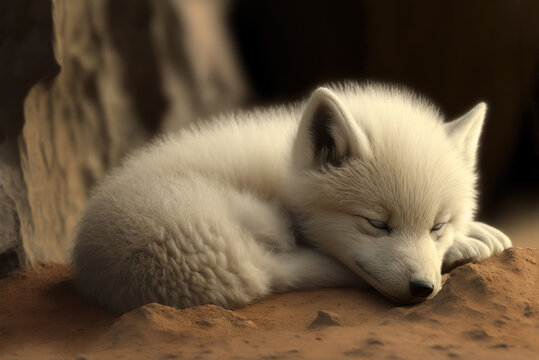
Baby Wolves: A Comprehensive Guide to the Enchanting World of Wolf Pups
Introduction
The arrival of baby wolves, known as pups, is a momentous occasion in the wolf pack. These adorable creatures bring joy and excitement to their family and play a vital role in the pack’s survival. In this comprehensive guide, we will delve into the fascinating world of baby wolves, exploring their physical characteristics, behavior, development, and the intricate dynamics within their pack.
Physical Characteristics
Baby wolves are born with a distinctive appearance that sets them apart from adult wolves. Their fur is typically a soft, grayish-brown color, providing excellent camouflage in their woodland habitat. As they mature, their fur gradually darkens to the characteristic black, gray, or brown coloration of adult wolves.
Pups are born with closed eyes and ears, which open within the first few weeks of life. Their tiny bodies are covered in a fine layer of fur, which helps to keep them warm in their den. As they grow, their fur becomes thicker and more protective.
Behavior
Baby wolves are highly social creatures that rely on their pack for survival. They spend much of their time playing and interacting with their siblings and parents. Play is an essential part of their development, helping them to learn important skills such as hunting, communication, and pack hierarchy.
Pups are also incredibly curious and exploratory. They love to explore their surroundings, sniffing and investigating everything they come across. This curiosity helps them to learn about their environment and develop their hunting instincts.
Development
Baby wolves undergo a rapid period of growth and development in their first year of life. They are born weighing only a few pounds, but they can grow to weigh up to 100 pounds by adulthood. Their physical development is closely linked to their nutritional intake, which is primarily provided by their mother’s milk.
As they grow, pups begin to transition from a milk-based diet to solid food. They start by eating regurgitated food from their parents, which contains partially digested meat and other nutrients. Gradually, they learn to hunt and scavenge for their own food.
Pack Dynamics
Baby wolves are an integral part of the wolf pack’s social structure. They are born into a hierarchical system, with the alpha pair (the dominant male and female) at the top. The alpha pair is responsible for leading the pack, making decisions, and protecting the pups.
Pups are treated with great care and affection by their parents and other pack members. They are often carried around by their mother or other adult wolves, and they are given priority access to food and shelter. This nurturing environment helps to ensure their survival and development.
Communication
Baby wolves communicate with each other and their parents through a variety of vocalizations and body language. They use whines, barks, and howls to express their needs, such as hunger, distress, or excitement. They also use body language, such as tail wagging, ear positioning, and facial expressions, to convey their emotions and intentions.
Threats and Conservation
Baby wolves face a number of threats in their natural habitat. Predators such as bears, cougars, and coyotes can pose a danger to pups, especially when they are young and vulnerable. Additionally, human activities such as habitat loss, hunting, and trapping can have a negative impact on wolf populations.
Conservation efforts are essential to protect baby wolves and ensure the survival of wolf packs. These efforts include habitat protection, responsible hunting regulations, and public education about the importance of wolves in the ecosystem.
Conclusion
Baby wolves are captivating creatures that play a vital role in the wolf pack’s survival. Their adorable appearance, playful behavior, and rapid development make them a joy to observe. By understanding their physical characteristics, behavior, development, and pack dynamics, we can appreciate the complexity and beauty of these amazing animals. Conservation efforts are crucial to ensure the future of baby wolves and the wolf packs they belong to.
